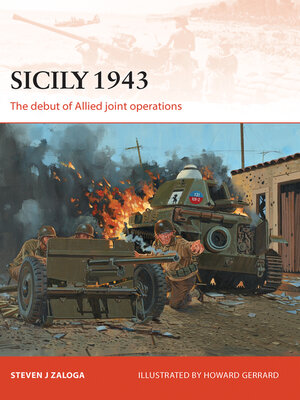
Sign up to save your library
With an OverDrive account, you can save your favorite libraries for at-a-glance information about availability. Find out more about OverDrive accounts.
Find this title in Libby, the library reading app by OverDrive.



Search for a digital library with this title
Title found at these libraries:
| Loading... |
Not only did the Sicily operation represent a watershed in tactical development of combined arms tactics, it was also an important test for future Allied joint operations. Senior British commanders left the North African theater with a jaundiced and dismissive view of the combat capabilities of the inexperienced US Army after the debacle at Kasserine Pass in Tunisia in February 1943. Sicily was a demonstration that the US Army had rapidly learned its lessons and was now capable of fighting as a co-equal of the British Army. The Sicily campaign contained a measure of high drama as Patton took the reins of the Seventh US Army and bent the rules of the theater commander in a bold race to take Palermo on the northern Sicilian coast. When stiff German resistance halted Montgomery's main assault to Messina through the mountains, Patton was posed to be the first to reach the key Sicilian port and end the campaign. The Sicily campaign contains a fair amount of controversy as well including the disastrous problems with early airborne assaults and the Allied failure to seal the straits of Messina, allowing the Germans to withdraw many of their best forces.






